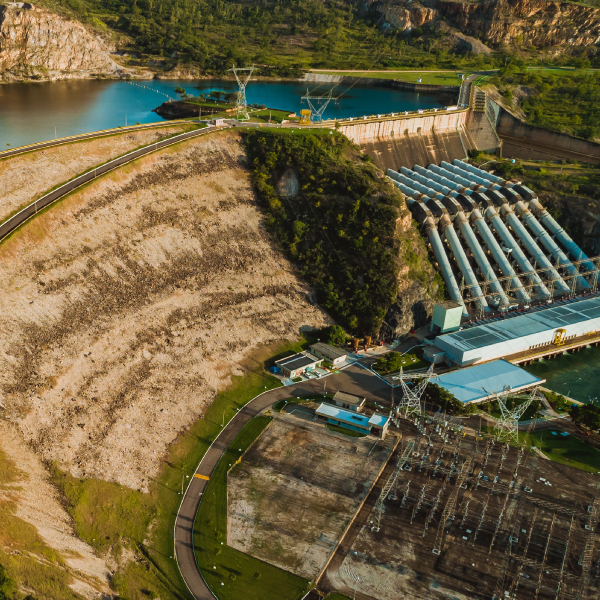
Through MME Resolution 40303 of 2022 (“Resolution”), the Ministry of Mines and Energy (“MME” for its Spanish acronym) repealed articles 18 and 19 of MME Resolution 180742 of 2012 and established new guidelines to promote and facilitate the coexistence of projects in the mining sector that are intended to be developed in the same area.
Prior to the Resolution, the partial or total overlapping of hydrocarbon and/or mining projects were resolved by applying the rules and procedures provided for these cases in articles 18 and 19 of MME Resolution 180742 of 2012 (as amended).
Additionally, the article 2.2.2.2.3.6.4. of Decree 1076 of 2015, state that environmental licenses could be granted to different projects in the same area, if the viability of the coexistence was demonstrated and the management and individual responsibility for the environmental impacts generated in the overlapping area was determined.
However, the MEM after considering (i) the uncertainty about how to proceed when two or more projects in the mining and energy sector overlap each other (considering that the projects in the sector are comparable and have the same legal status); and (ii) that the National Development Plan 2018-2022, in the Pact for Mining-Energy Resources, established that the mining-energy structure should include in its planning processes, the coexistence between the different productive activities, resolved to issue the Resolution. The points to highlight are the following:
- The MME must implement a Public Digital Information System that contains updated information of mining and energy sector projects.
- The ANH and the National Mining Agency (“ANM” for its Spanish acronym), before signing any contract for exploration, exploitation or production of hydrocarbons and minerals, shall verify the existence of previously assigned projects in the same area and in case of overlapping, shall inform (i) the Mining and Energy Planning Unit (“UPME”), the electric energy directorate of the MME, the ANH or the mining authority, as appropriate; (ii) the interested party in developing the new project; and (iii) the owner of the existing project. In such scenarios, a clause where the parties are obliged to ease the execution of Coexistence Agreements (as defined hereinafter).
- The direct negotiation stage may not exceed the term of 120 working days, extendable for another 60 days, which maintains the term established in Resolution 180742 of 2012. Within the direct negotiation stage, the following steps shall be carried out: (i) The developer who first becomes aware of the overlap shall inform a) the competent authority within five working days, for the purpose of requesting its accompaniment in the negotiation; and b) the beneficiary of the overlapping project to express its interest in initiating the direct negotiation; (ii) in the 30 calendar period following said communication, the parties shall convene to hold an initial meeting (authorities may intercede for purposes of convening such meeting) and; (iii) after an agreement is reached, the parties shall sign an operational coexistence agreement, where the parties include the way in which both projects may coexist (e.g. technical and security aspects, environmental aspects, social aspects and conflict resolution aspects). Said agreement shall be sent to the corresponding authorities.
During this stage, both developers must prepare a Technical Report for each project including basic project data, a schedule of activities, plans, among others. Said report shall be included as an annex to the coexistence operational agreement. - If parties fail to reach an agreement, a minute shall be drafted including: (i) the causes for the failure to reach an agreement, (ii) plans and activities that each party contributed during the negotiation, and (iii) the commitment to jointly apply for a conflict resolution mechanism within a maximum period of 1 year. The minutes of failed negotiations shall be submitted to the competent authority.
From the point of view of the development of projects for the energy subsector, the Resolution, in its purpose of articulation between subsectors and publicity for the development of projects, makes important clarifications. In particular, the following stand out:
- Electricity and green hydrogen projects, may request a public utility and social interest certification through the digital system implemented by the Resolution.
- For purposes of registering electricity generation projects before the Energy and Mining Planning Authority (“UPME”) in phase 1, the project’s promoter shall evidence having notified the ANH, UPME and MME the coordinates of the projects so to confirm the overlapping with other projects. For purposes of registering the project in phase 2, the corresponding operational coexistence agreements shall be already signed.
- Calls upon the Energy and Gas Regulation Commission (“CREG”) to adjust current regulations and include the obligation for promoters of electricity projects for easing up the coexistence of projects in case of overlap.
- In addition, the UPME, in the projects of expansion of the National Interconnected System seeking to be awarded via public auction, shall inform the ANH the characteristics and coordinates of the project for purposes of identifying potential overlapping of projects. The interested bidders shall confirm their commitment to ease the coexistence of projects. In the design of the grid, the interested party shall inform the relevant authorities about the possible overlaps. If said communications are not made, then any request for amendment of the Commercial Operations Date shall not be approved for delays in these coexistence agreements execution.
- A similar commitment shall be made for projects of the National Natural Gas Supply Plan, Expansion Plans of the Polyduct Network, Continuity Plan for Liquid Fuels and hydrocarbon transportation infrastructure.
The guidelines contained in this Resolution will be applicable to new technologies that are developed after its entry into force in any of the subsectors of the mining and energy sector and until specific rules are defined for them.